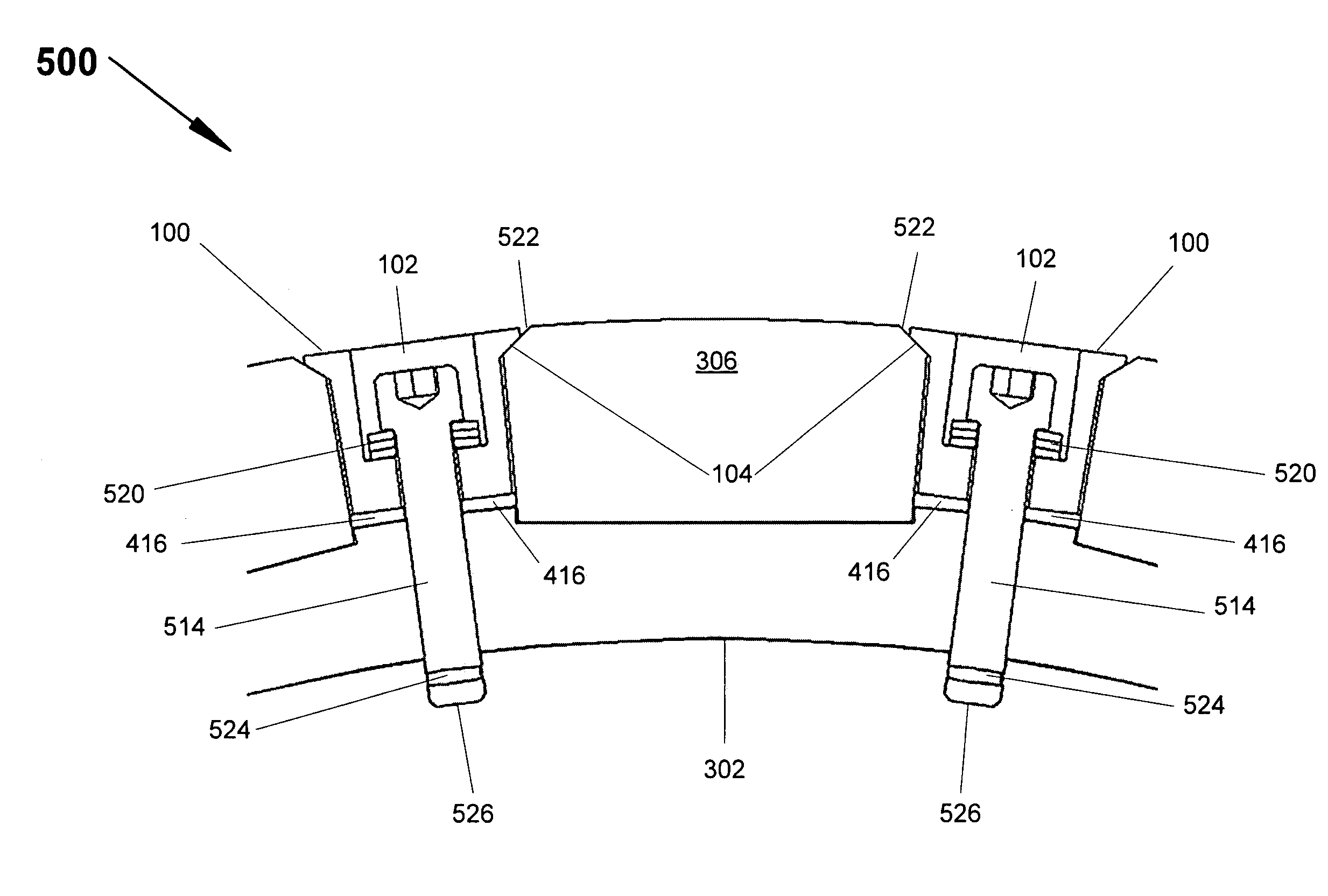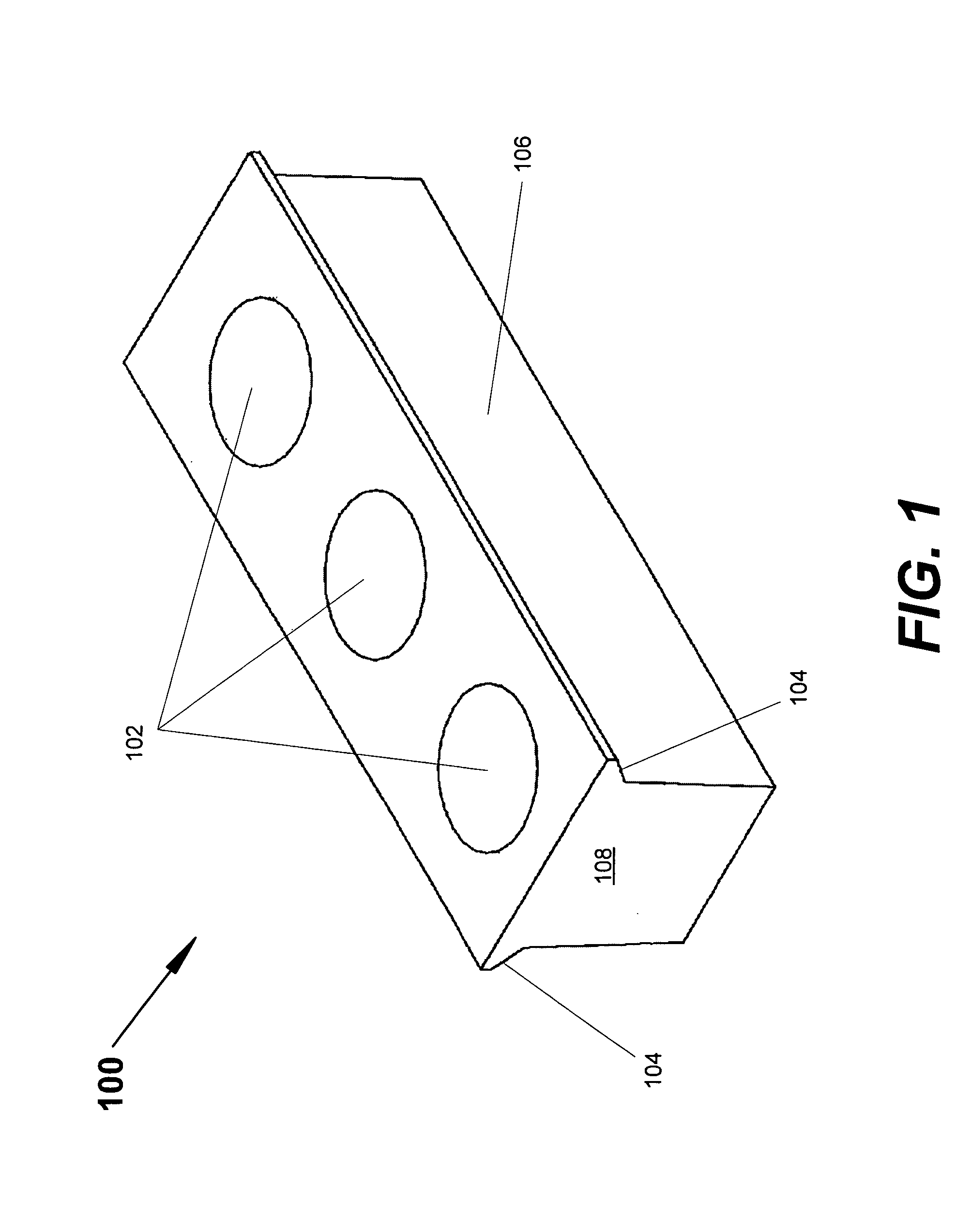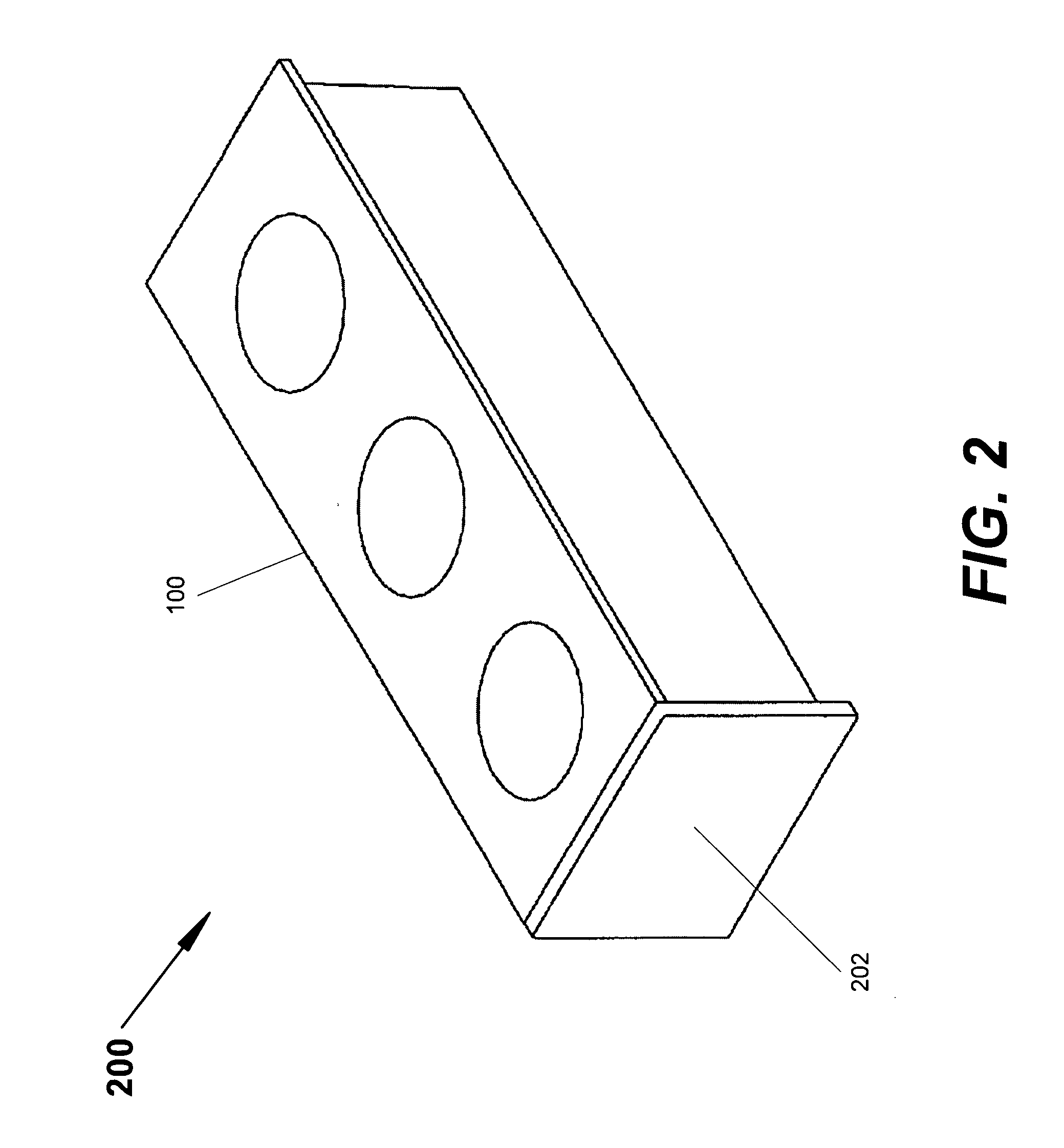Magnet retention on rotors
a magnet and rotor technology, applied in the direction of magnetic circuit rotating parts, dynamo-electric machines, magnetic circuit shape/form/construction, etc., can solve the problems of high centrifugal force, difficult magnet retention, brittle ceramics of magnets,
- Summary
- Abstract
- Description
- Claims
- Application Information
AI Technical Summary
Benefits of technology
Problems solved by technology
Method used
Image
Examples
Embodiment Construction
[0020] The present invention provides for improved retention of magnets on rotors useful in permanent magnet motors. In accordance with the present invention, magnet retainers are advantageously utilized to aid in retaining magnets onto a rotor body that has a cylindrical surface. The magnets are disposed on the cylindrical surface at equal intervals around the circumference of the cylindrical surface. An adhesive layer is disposed between the magnet and the cylindrical surface. Magnet retainers are disposed between each pair of magnets and secured to the rotor body. The magnet retainers are secured to the rotor body in a manner that applies a centripetal force on the magnets, pulling the magnets down onto the cylindrical surface of the rotor body in a manner that exerts a compressive force on the adhesive layer even at the highest rotational speeds at which the rotor is used. Spring mechanisms are used to counter centrifugal force on the magnets during use (i.e., rotation of the ro...
PUM
 Login to View More
Login to View More Abstract
Description
Claims
Application Information
 Login to View More
Login to View More - R&D
- Intellectual Property
- Life Sciences
- Materials
- Tech Scout
- Unparalleled Data Quality
- Higher Quality Content
- 60% Fewer Hallucinations
Browse by: Latest US Patents, China's latest patents, Technical Efficacy Thesaurus, Application Domain, Technology Topic, Popular Technical Reports.
© 2025 PatSnap. All rights reserved.Legal|Privacy policy|Modern Slavery Act Transparency Statement|Sitemap|About US| Contact US: help@patsnap.com



